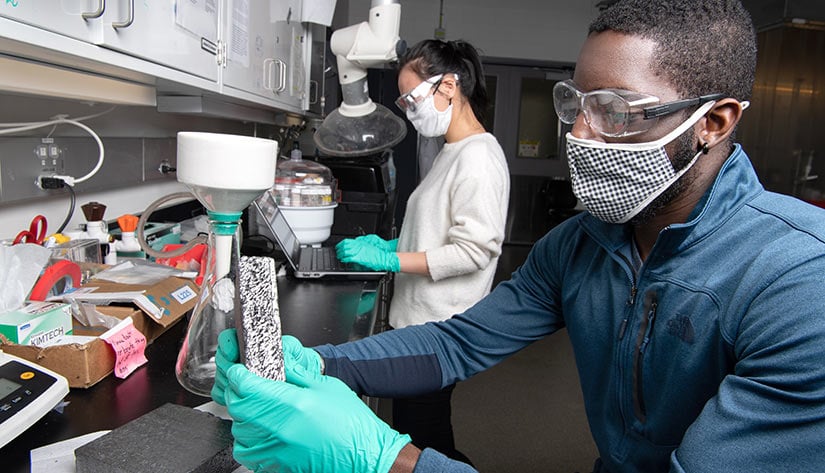Thermal Energy Storage
NREL is significantly advancing the viability of thermal energy storage (TES) as a building decarbonization resource for a highly renewable energy future.

Through industry partnerships, NREL researchers address technical barriers to deployment and widespread adoption of thermal energy storage in buildings.
Impact of Buildings and Storage
In the United States, buildings consume approximately 39% of all primary energy and 74% of all electricity. Thermal end uses—such as space conditioning, water heating, and refrigeration—represent approximately 50% of building energy demand and are projected to increase in the years ahead.
To accomplish the low-carbon energy goal in the building sector, TES offers several benefits by reducing energy consumption and increasing load flexibility, thus promoting the use of renewable energy sources. There is a need for innovative building technologies that can provide TES solutions at larger scales than what currently exists.
At NREL, the thermal energy science research area focuses on the development, validation, and integration of thermal storage materials, components, and hybrid storage systems. This research can provide energy storage solutions for affordable integrated clean energy pathways.
Key research activities include:
- Development of advanced building-scale thermal energy storage technologies
- Integration of thermal energy storage with other forms of energy storage, renewable energy, and loads
- An inter-office energy storage project in collaboration with the Department of Energy's Vehicle Technologies Office, Building Technologies Office, and Solar Energy Technologies Office to provide foundational science enabling cost-effective pathways for optimized design and operation of hybrid thermal and electrochemical energy storage systems.
Collaborative Solutions for Market Transformation
Market transformation requires utilities, building owners, designers, architects, engineers, and other stakeholders to adopt and understand the benefits provided by TES.
The only TES technologies commercially available for buildings are ice storage and chilled water, and there are still challenges that need to be addressed to allow their widespread adoption. Another limitation is that ice storage only serves cooling applications and mostly for large buildings with central chiller plants. To achieve 100% electrification, TES solutions are also needed for heating. Heat pumps need to be optimized and integrated with TES for increasing its reliability and utilization.
NREL researchers are collaborating with other national laboratories, like Lawrence Berkeley National Laboratory, and industry partners to identify integrated approaches that tie deployment and demonstration with R&D, guided by techno-economic analyses.
Key Publications
These journal articles provide additional background on TES research in buildings.
Addressing Energy Storage Needs at Lower Cost via On-Site Thermal Energy Storage in Buildings, Energy & Environmental Science (2021)
Rate Capability and Ragone Plots for Phase Change Thermal Energy Storage, Nature Energy (2021)
Evaluation of Phase Change Plaster/Paste Composites for Building Envelopes, Energy and Buildings (2021)
Design and Performance Evaluation of a Dual-circuit Thermal Energy Storage Module for Air Conditioners, Applied Energy (2021)
Optimizing PCM-Integrated Walls for Potential Energy Savings in U.S. Buildings, Energy and Buildings (2020)
Contact
Senior Research Engineer and Business Development Lead
Share
Last Updated June 20, 2025
